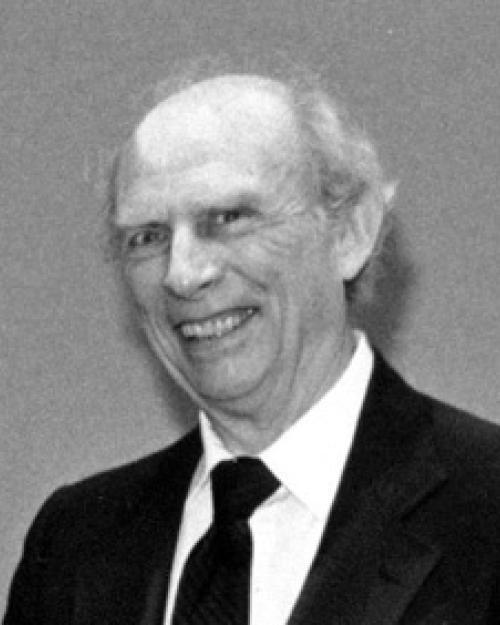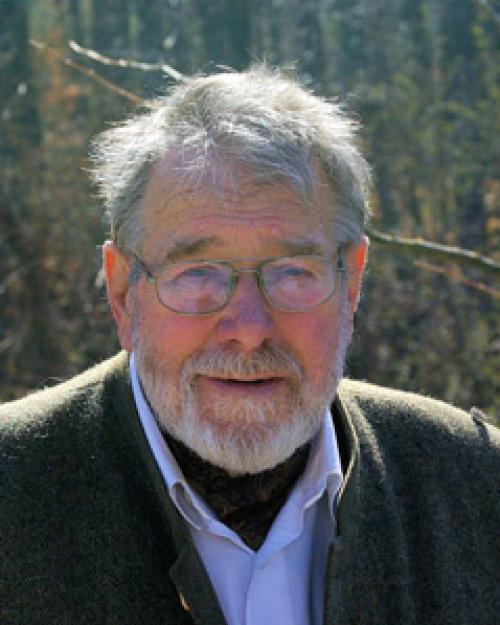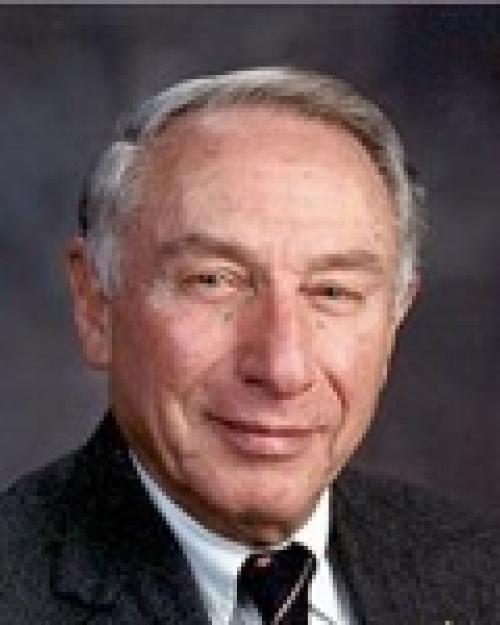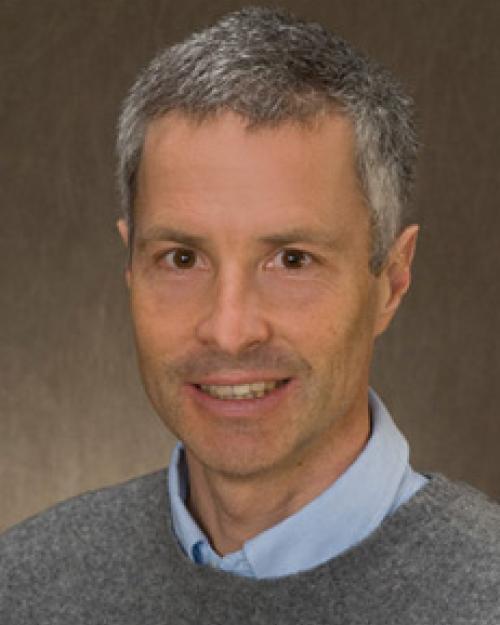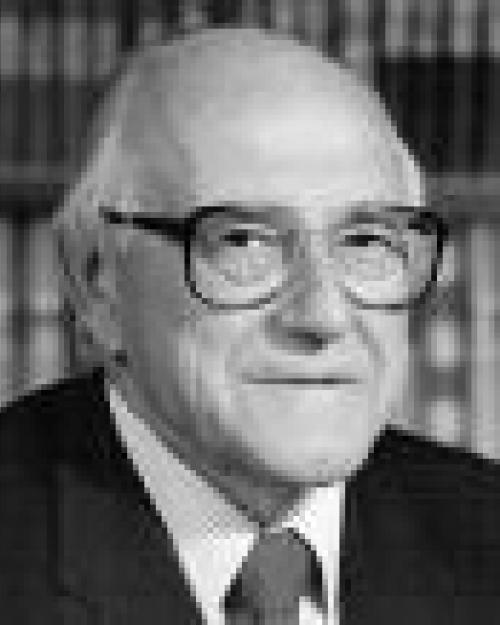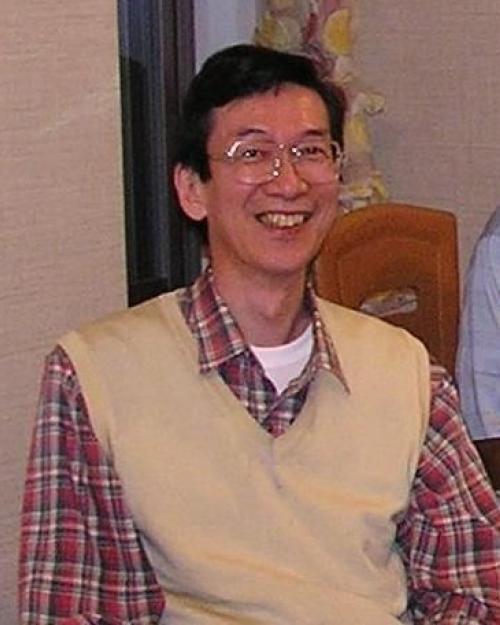-

William Horton
-William H. Horton (S’40–M’43–SM’55– F’99) was born in Pittsburgh, Pennsylvania in 1921. He received the B.S.E.E. degree from MIT in 1943 and after serving in the U.S. Navy during WWII received the E.E. and Ph.D. degrees from Stanford University in 1948 and 1952, respectively. After completing his Ph.D. studies he became a member of the technical staff of General Electric in Schenectady, NY, and in 1965 cofounded Piezo Technology, Inc. in Orlando, Florida, where from 1969 until the sale of the company in 2004 he was president. He was chairman emeritus and technical consultant for the successor company, MtronPTI. PTI produced advanced VHF crystal filters; becoming one of the largest producers of monolithic crystal filters through the 1970s. In 1979, under Dr. Horton’s leadership, a group of engineers started a small company, named Sawtek, which was part-owned, housed and supported by PTI in its early few years. Sawtek grew rapidly with the advent of cellular radio requiring surface acoustic wave filters, went public, and later merged with Triquint, and is now part of Qorvo. While playing a major role in the startup of two companies, he also was technical leader, contributing authored or co-authored numerous presentations at the IEEE Frequency Control Symposium and in the UFFC transactions. He held several patents relating to the design and fabrication of quartz resonators and was the Principal Investigator on several SBIRs and other research programs. Bill had strength in both BAW device theory and measurements, and loved working on the bench. His last technical work spanning several years was on understanding the amplitude-frequency effect in quartz resonators, culminating in his 2006 IEEE UFFC-T publication. Bill was also a mentor to the many engineers who worked with him both inside and outside his company, providing guidance and advise, and challenging new concepts and ideas. Beyond professional accomplishments, Dr. Horton led in establishing the PTI profit sharing program that shared success with its employees. Bill served on several IEEE committees and, for many years, participated in the planning of the IEEE International Frequency Control Symposium (IFCS). Bill also supported and worked with faculty and students at the University of Central Florida. Dr. Horton continued to work part-time at MtronPTI into his 90s. Dr. Horton was a Life Fellow member of IEEE, a member of Sigma Xi and Sigma Tau, an Honorary member of EKN and a Professional Engineer (Retired). He received the Region 3, IEEE Outstanding Engineer Award in 1988, and the IEEE International Frequency Control C.B. Sawyer Award in 1990. He is survived by five children. In recognition of his contribution to PTI, the frequency control industry and his love of research, MtronPTI established the Horton Endowment Scholarship at the University of Central Florida (UCF). Donations can be made at: https://www.ucffoundation.org/give-to-a-ucf-college For “Designation”, select “Other” and paste: CECS000307 – Horton Endowed Scholarship Dr. Horton was a frequent, and generous contributor to the field of frequency control. His publications included: A note on VHF acoustically coupled bandpass crystal filters R. C. Smythe; W. H. Horton; R. B. Angove
Proceedings of the IEEE Year: 1967, Volume: 55, Issue: 3 Pages: 422 – 423, DOI: 10.1109/PROC.1967.5512 Experimental Investigations of Intermodulation in Monolithic Crystal Filters W. H. Horton; R. C. Smythe
27th Annual Symposium on Frequency Control. 1973 Year: 1973 Pages: 243 – 245, DOI: 10.1109/FREQ.1973.199963 Future of the Quartz Industry – World Views W. H. Horton Thirty Fifth Annual Frequency Control Symposium. 1981
Year: 1981 Pages: 592 – 592, DOI: 10.1109/FREQ.1981.200529 Evaluation of Crystal Measurement Systems R. C. Smythe; W. H. Horton 37th Annual Symposium on Frequency Control. 1983 Year: 1983 Pages: 290 – 296, DOI: 10.1109/FREQ.1983.200682 Quartz Crystal Unwanted Mode Response and Measurement
W. H. Horton IEEE Transactions on Sonics and Ultrasonics Year: 1966, Volume: 13, Issue: 4
Pages: 111 – 115, DOI: 10.1109/T-SU.1966.29393
Comparison of Methods for Measurement of Quartz Crystal Resonators with Load Capacitance W. H. Horton; T. S. Payne; R. C. Smythe; D. A. Symonds Thirty Fifth Annual Frequency Control Symposium. 1981
Year: 1981 Pages: 271 – 279, DOI: 10.1109/FREQ.1981.200484 The work of Mortley and the energy-trapping theory for thickness-shear piezoelectric vibrators W. H. Horton; R. C. Smythe Proceedings of the IEEE Year: 1967, Volume: 55, Issue: 2 Pages: 222 – 222, DOI: 10.1109/PROC.1967.5448 The Hybrid-Coil Bridge Method of Measuring Unwanted Modes of Vibration in Quartz Crystals W. H. Horton; R. C. Smythe 17th Annual Symposium on Frequency Control. 1963 Year: 1963 Pages: 316 – 324, DOI: 10.1109/FREQ.1963.201269 A new frequency for piezoelectric resonator measurement
W. H. Horton; R. C. Smythe Proceedings of the IEEE Year: 1983, Volume: 71, Issue: 2
Pages: 280 – 282, DOI: 10.1109/PROC.1983.12574
Portable detection system for illicit materials based on SAW resonators G. Watson; W. Horton; E. Staples Ultrasonics Symposium, 1992. Proceedings., IEEE 1992 Year: 1992 Pages: 269 – 273 vol.1, DOI: 10.1109/ULTSYM.1992.275997 Comparison of Crystal Measurement Equipment W. H. Horton; S. B. Boor Frequency Control, 1965 19th Annual Symposium on
Year: 1965 Pages: 436 – 468, DOI: 10.1109/FREQ.1965.199589 Dynamic measurement of amplitude-frequency effect of VHF resonators W. H. Horton; G. E. Hague
IEEE Transactions on Ultrasonics, Ferroelectrics, and Frequency Control Year: 2006, Volume: 53, Issue: 1 Pages: 159 – 166, DOI: 10.1109/TUFFC.2006.1588401 Adjustment of resonator G-sensitivity by circuit means R. C. Smythe; W. H. Horton Frequency Control, 1990., Proceedings of the 44th Annual Symposium on Year: 1990 Pages: 437 – 443, DOI: 10.1109/FREQ.1990.177529 Theory of Thickness-Shear Vibrators, with Extensions and Applications to VHF Acoustically-Coupled-Resonator Filters W. H. Horton; R. C. Smythe
21st Annual Symposium on Frequency Control. 1967 Year: 1967 Pages: 160 – 178, DOI: 10.1109/FREQ.1967.199664 On the trapped-wave criterion for AT-cut quartz resonators with coated electrodes W. H. Horton; R. C. Smythe
Proceedings of the IEEE Year: 1967, Volume: 55, Issue: 4 Pages: 598 – 599, DOI: 10.1109/PROC.1967.5619 Amplitude-frequency effects in VHF quartz resonators W. H. Horton; G. E. Hague Proceedings of the 2005 IEEE International Frequency Control Symposium and Exposition, 2005. Year: 2005 Page: 10 pp., DOI: 10.1109/FREQ.2005.1574037
Franz Seifert
-Our colleague and friend Prof. Dr. Franz Seifert (IEEE SM ’86), SAW pioneer of the 1970s, 1980s and 1990s, passed away at his home in Vienna, Austria, on February 7, 2016, unexpectedly. Franz was born in 1933 in Vienna. He graduated from the Technical University Vienna in 1961 with a Dipl.Ing. degree, and finished his studies with the PhD in 1965. At TU Vienna, he joined the Institute of High Frequency Technology as a research assistant; two years later he moved to the Institute for Physical Electronics, where he received a call as Professor for Applied Electronics in 1974. His interest in the measurement of semiconductor properties of InSb, which he focused on in his early years as a professor, brought him into contact with acoustic charge transport and acoustic wave technology. Together with his team of scientists and students, he worked and significantly contributed to virtually all areas of the application of acoustic wave devices. Signal processing was the key theme in all of his research and most of his inventions. During more than 30 years he was active in the development of pulse compression filters, advanced spread spectrum techniques and analogue and digital convolvers. With his team, he performed contract research for government agencies, e.g. the Austrian Armed Forces, as well as the defense and aerospace industries. Of extremely high impact was Franz Seifert’s work on surface acoustic wave (SAW-) filter design techniques, manufacturing technology, and – last but not least – device simulation. Through his work and the contributions of his team members and PhD students, among them Alireza Baghai-Wadji, and Clemens Ruppel, the early activities of Siemens AG, Munich, later EPCOS AG, received decisive inputs and scientific guidance. Also in cooperation with Siemens, he did pioneering work in the field of wireless sensing, of course applying SAW-based sensor elements. Another focus area of research was medical electronics, especially concerning signal processing with respect to the measurement of the blood flux in arteries during the research on arteriosclerosis. To all areas of his research he contributed innovations. Overall, more than 35 patents carry his name as inventor or co-inventor. Franz was also remarkable with respect to his dedication to teaching. It was his true ambition to educate students and, e.g., to explain to undergraduates the “world of electronics” in an understandable way. He had the rare gift to analyze complex systems and unveil the root cause chain. We knew Franz as a very friendly and modest man, though willing to fight for his beliefs when necessary. It was always much more important for him to see the results of his effort being used, working well and having impact, than to stand in the spotlight himself. As a private persons, his greatest passion was to spend time with his family and his many friends, to work in his home and garden, to which normally no craftsman had access (“An engineer can fix this on his own!”), to listen to music and study Austrian history. He was buried in presence of numerous colleagues from academia and industry, most of them former students of Franz) in his family’s tomb on a sunny winter day.

Floyd Dunn
-IEEE Edison Medal recipient and Life Fellow, Floyd Dunn, a groundbreaking pioneer in the science of ultrasound and bioacoustics, died on January 24, 2015. A veteran of the WWII Battle of the Ardennes, he was 90 years old. His death comes 30 days after that of his wife of 64 years, Elsa Dunn. Floyd attended the University of Illinois at Urbana-Champaign in the Department of Electrical Engineering, arriving in 1946 as an undergraduate student on the GI Bill. He earned three degrees, including his PhD in 1956. For more than twenty years, he directed the Bioacoustics Research Laboratory that had been founded by his research advisor William J. Fry and his brother Frances J. Fry, in 1946. Floyd Chaired the Bioengineering Faculty from 1978 to 1982. He retired and accepted emeritus status in 1995. In 1996 he and Elsa moved to Tucson, Arizona where Floyd remained scientifically active. Floyd, in 1954, was a founding member of the IRE Professional Group on Ultrasonics Engineering (now the IEEE Transactions on Ultrasonics, Ferroelectrics, and Frequency Control) three-person Editorial Board (then called the Paper Review Board); the other two board members were Bill and Frank Fry. Floyd had an extraordinarily creative science and engineering career at the interface between diagnostic and therapeutic ultrasound and living systems, and his influential research significantly promoted diagnostic and therapeutic ultrasound. He was the first to quantify in vivo the temperature-dependent ultrasonic absorption coefficient, a pivotal finding that significantly influenced therapeutic ultrasound; the first to demonstrate that ultrasonic images resulted from structural protein constituents, a seminal finding that initiated worldwide research activities in ultrasonic tissue characterization; and the first to recognize the need to quantify the nonlinearity parameter in biological materials. His innovative experimental preparations showed that physical interactions of ultrasound in living systems occur under conditions where thermal and cavitation events were innocuous, thus demonstrating the control achievable in producing reversible and irreversible changes in living systems. Floyd’s revolutionary work contributed to the safety and efficacy of diagnostic and therapeutic ultrasound. This included determining ultrasonic thresholds for irreversible structural changes. These thresholds became the de facto worldwide standards from which government, academic and research bodies established diagnostic ultrasound safety criteria. Floyd was widely recognized for his professional achievements. He was a member of both the National Academy of Sciences and the National Academy of Engineering. He was the past President of the Acoustical Society of America. He held fellowships in seven professional associations and was a member of eight editorial boards. He was a recipient of the ASA Gold and Silver Medals as well as the AIUM William J. Fry Memorial Lecture Award in 1984 and the AIUM Joseph P. Holmes Basic Science Pioneer Award in 1990. He received the University of Illinois Senior Scholar and Distinguished Alumnus Awards, the Medal of Special Merit of the Acoustical Society of Japan, and was an honorary member of the Japan Society for Ultrasound in Medicine. For sustained leadership in biomedical ultrasound, Floyd Dunn stood alone. Devoting his career efforts to the subject for nearly six decades, he maintained a steady flow of productive research and built one of the largest organizations devoted to the field. Through leadership and participation in numerous organizations behind the scenes, he encouraged the development of the field at home and abroad. He was involved in the first major blossoming of biomedical ultrasound in the 1950s and 1960s including a few years when he nearly single-handedly kept the field alive. Today biomedical ultrasound is a major industry, and basic research in the field receives a significant fraction of the NIH budget. No single scientist is more responsible for this success than Floyd Dunn. Floyd Dunn is survived by his daughter, Andi Dunn, his son, Roo Dunn, and five grandchildren.

Geoff Lockwood
-Geoff Lockwood passed away on Tuesday afternoon, January 20th, 2015. He was born in 1961 in Toronto. Throughout his early life he was fascinated by flight, and planned to be an aeronautical engineer. But Medical imaging turned out to be his calling – and after obtaining an Electrical Engineering degree from the U of T he went on to become one of the early pioneers of high frequency ultrasound, obtaining a PhD from the U of T in Medical Biophysics. Geoff was a gifted researcher. He left Canada to become a scientist at the prestigious Cleveland Clinic in the U.S., while also holding adjunct positions at Ohio State and Case Western Reserve Universities. While in the US his expertise attracted a number of high-profile NIH (US National Institute of Health) and Department of Defense grants. But his real passion was teaching – he wanted to work with students, and in 1999 this passion brought him, along with Anne and their two boys, back to Canada and Queen’s Engineering Physics. Geoff continued his work in high-frequency medical ultrasound imaging, and his research group worked on everything from designing miniature integrated circuit beamformers to real-time 3D ultrasound imaging. Over only 15 years, Geoff won over $3.3M in research funding from US and Canada granting agencies and developed 5 patents. His early work at the U of T formed the basis for VisualSonics – an ultrasound micro-imaging technology company founded by Dr. Stuart Foster (Sunnybrook Health Sciences Centre). Upon the recent sale (2012) of this company, Dr. Foster recognised Geoff’s significant accomplishment by establishing a $900K endowed scholarship in his name at the University of Toronto. But despite his enormous research talent and insight, Geoff’s heart was primarily with the students. His teaching methods were simple – a piece of chalk and a blackboard – but his lectures were delivered with an intelligence and care that deliberately left no student behind. He loved teaching so much that he asked to return to the classroom even after his first devastating round of brain surgery/radiation/chemotherapy. He spent hours re-learning his own ENPH239 lecture notes, and even typed them up for the students in case he had to miss a class. It is no surprise that year after year after year he won the teaching award in Engineering Physics. Above all, Geoff had an amazing, and rare, strength of spirit. His illness never defeated this amazing spirit. Every time the cancer, or the treatments, knocked him down and closed a door, he would simply open it again, or try a new door. He re-learned how to walk; re-learned how to talk. He re-learned his lecture material. When he couldn’t snowboard anymore he re-learned how to ski. He re-learned how to rock climb, even though his feet were numb and he couldn’t feel the footholds.

Robert H. Kern
-Mr. Robert H. Kern died June 4, 2015 in Danvers Massachusetts at the age of 85 at the Kaplan Family Hospice House in Danvers, Mass. He was internationally recognized as one of the foremost designers of cesium beam tubes and innovator in the time and frequency community. Born in New York City, he was the son of the late Carl Henry and Helen L. (Victor) Kern. He was raised and educated in New York City and was a graduate of Cornell University. He earned both his BSEE (1955) and MS (1956) Degrees from Cornell University in Engineering.
He served two years on active duty with the U.S. Air Force and was assigned as a Base Communications Officer in the U.K. From 1962 to 1969 he was associated with the Quantum Electronics Division of Varian Associates where he was directly responsible for the early development and production of cesium beam tubes. During his tenure at Varian/QED it was acquired by Hewlett Packard and reorganized into the Frequency and Time – East Division of Hewlett Packard. Continuing with Hewlett Packard – East Division, Mr. Kern was responsible for the design and engineering of cesium tubes which were utilized in thousands of standards throughout the world. In addition to his association with Varian and HP he held the position of Senior Scientific Executive with EG&G, Inc. and Senior Research and Development engineer for CBS Electronics. In 1971 Mr. Kern founded Frequency and Time Systems (FTS) and served as President and General Manager. During these early years in the 1970’s he became involved with the U.S. Naval Research Laboratory and their navigation satellite program to develop precision atomic clocks for satellites. FTS supplied, in cooperation with the Efratom company of Munich, several Efratom FRK rubidium frequency standards for experimental use on board the Navigation Technology Satellite One (NTS-1) that was built by the U.S. Naval Research Laboratory and launched 14 July 1974. This technology satellite was the first satellite launched in the newly formed NAVSTAR Global Positioning System (GPS) program and the first to place atomic frequency standards in orbit. The Efratom RFK units were selected by Rockwell International for use in the Block 1 GPS satellites built under contract to the GPS Joint Program Office. At FTS Mr. Kern was responsible for the design and development of a new generation of space qualified cesium beam tube frequency standards suitable for use in space and in severe dynamic environmental situations. The first prototypical cesium beam frequency standards were developed and launched into space in 1977 aboard the NTS-2. This satellite was the second one launched as part of the NAVSTAR GPS program and was the first to transmit the full complement of GPS navigation signals. The prototypical units incorporated into NTS-2 became the basis for the exploratory development, advanced development and pre-production cesium beam frequency standards built by FTS culminating in the production cesium standards for the operational GPS satellites. These cesium clocks provided the highly stable and reliable signals that contributed greatly to the success of GPS Blocks 1, 2, and 2A satellites. However, in 1978 Mr. Kern sold his interest in FTS and founded Kernco, Inc. of Danvers, Mass in 1979. He also served as President and General Manager of this company. He began the development of an alternate source of space qualified cesium beam frequency standards flown in GPS block 2A and a smaller, more capable cesium beam standard. His achievements in leading Kernco included the development of quartz oscillators flown on many of the latter block IIR satellites, development of thermal vacuum chamber systems for long term testing, small vac-ion pumps, timing instrumentation and his later work exploring alternative technologies for future satellite Standards. Mr. Kern holds eight seminal patents in the field of cesium beam technology. A resident of the Town of Danvers since 1960, Bob was a member of the Association of Old Crows, the Aircraft Owners and Pilots Association and was a member of the Maple Street Congregational Church of Danvers. In his free time he enjoyed boating, swimming, tennis, and fishing in the summer on Highland Lake in Maine with his family and friends. He was an avid outdoorsman who enjoyed skiing. Bob was preceded in death by his first wife, Janet Marie (Upson) Kern. He is survived by his wife of 32 years, Evelyn (Eshleman) Kern of Danvers; his son, Andrew Carleton Kern and his wife Brenda of Delaware, Ohio; his daughter, Joanne Kern McDermott of Irvine, California; and his grandson, Adam Henry McDermott.
Gerald Farnell
-Gerald W. Farnell – Professor Emeritus With great sadness, we announce the passing of Gerald Farnell at the Verdun General Hospital on April 30, 2015. The son of Alice (Turner) and Jack Farnell, Jerry was born in Toronto on August 31, 1925. He was a proud and grateful Canadian who had an abiding affection for Montreal and the province of Quebec, his home for the last 65 years of his life. After graduating from Danforth Technical High School in 1942, he served in the Canadian Army and began his studies at the University of Toronto as a member of the Army Officer Training Course. In 1950, having earned a Master of Science degree from the Massachusetts Institute of Technology, Jerry arrived at McGill as a lecturer and PHD Graduate Student. While at McGill he served as Professor of Engineering Physics and Electrical Engineering, including terms as Chairman of the Electrical Engineering Department (from 1967 until 1972) and Dean of the Engineering Faculty (from 1974 until 1984). In 1991, he retired from McGill as Professor Emeritus. During his decades at McGill, Jerry gained a reputation as a dedicated and enthusiastic teacher. In collaboration with colleagues and graduate students, he registered three patents, published 93 papers and earned international recognition for his research on the propagation of Acoustical Surface Waves in anisotropic materials leading to the development of radio frequency filters, now ubiquitous in mobile phones. As a Nuffield Fellow he spent 1960-61 at the Clarendon Laboratory in Oxford and became a Fellow of IEEE in 1970. From 1972 to ’73, he was Engineering Consultant for Thomson CSF in Cagnes sur Mer and Visiting Professor in the Laboratories d’Electrooptique at the Faculté des Sciences in Nice, France. Elected president of the Ultrasonics Society, he served from 1988-1989, received the IEEE Achievement award in 1991, the Distinguished Service Award of the Society in 1997 and the Lord Rayleigh Award in 2001. A Fellow of the Royal Society of Canada in 1996. Jerry was one of the first to give a course on “semiconductors and transistor electronics” at a Canadian University. Although he was left with a bothersome knee, Jerry had fond memories of playing high school football, recreational basketball at U of T and sailing at the Royal St. Lawrence Yacht Club. In later years, he continued his lifelong joy of reading and revived an interest in playing duplicate bridge. Remembered as a talented “doodler” during professional meetings, in retirement he bestowed among family and friends a noteworthy number of his impressive acrylic paintings. Jerry is survived by his wife of 66 years, Norma (McRae); his daughter Sandra (John Peacock); his son Douglas (Anne Tchipeff); his sister Doreen (Al Thomsen); grandsons Anthony Farnell (Samantha Guedes) and Alexander Farnell (Annie Rivard); granddaughters Erika Moisl (Remi Lacroix) and Katherine Farnell (Maxwell Insley); and great-grandson Evan Insley. His presence among us will be sorely missed but the memory of him as a cherished husband, a devoted father and grandfather, a loving brother and a loyal friend will remain in our hearts forever. Minor editing of the version published in The Montreal Gazette from May 5 to May 9, 2015

Yasuo Ebata
-Dr. Yasuo Ebata passed away calmly, May 13, 2013, expressing volumes of his gratitude with a smile to his wife Noriko-san, at Shonan Kamakura General Hospital in Kamakura, Kanagawa Japan after a long battle with
rheumatoid arthritis and related troubles.
He made many seminal contributions to the science and technologies of SAW devices using metal grating. SAW device is one of passive electronic devices which are
produced mainly by companies in Japan today. Electro mechanical device, such as a SAW device, is one of Japanese
traditional specialties originated by Prof. I. Koga. Ebata-san played important role to hand over it to next generation. He was born June 24, 1948, in Tokyo. In 1971 he graduated from Department of Electrical Engineering, College of Engineering Yokohama National University with B.S.E.E. degree and received his PhD in Electrical Engineering for research on SAW resonator using metal grating reflector from Tohoku University in 1988. In 1971 he joined Toshiba and engaged on research and development of SAW devices at Research and Development Center and moved to the Operational Division to commercialize SAW devices in 1987. In 2002, Ebata-san was temporarily transferred to Fujitsu Media Devices (FMD) according to transfer of SAW business to Fujitsu and moved to FMD in 2004.
He retired from FMD October 2008. Typical examples of commercially succeeded SAW devices, of which he contributed the development, are as follows SAW resonators for VCR RF modulator SAW filters for pager, cordless telephone, etc. SAW filters and duplexers for cellular phone and PHS
Ebata-san published more than 60 technical papers and applied more than 100 articles
for a patent. He received OHM Technology award in 1984. Ebata-san had distinguished career as a secretary or member of many committees including, Japan Society for the Promotion of Science University-Industry
Cooperative Research Committees 150th committee on Acoustic Wave Device Technology IEC TC49 WG10-1 SAW Device
IEE Electro Mechanical Functional Device Committee Technical Program Committee for IEEE US Symposium During long life under medical treatment, he did never lose a smile and consideration for other people. Ebata-san is survived by his wife Noriko-san, two daughters and two grandchildren.Clinton Hartmann
-Clinton Sylvester Hartmann passed away at his home in Dallas, TX, February 4, 2013, after a battle with osteosarcoma. He was born December 31, 1944, in Fredericksburg, Texas to Gretchen and Lawrence Hartmann and grew up on the family ranch. Clinton was an internationally recognized pioneer of SAW technology. As a scientist and an engineer, he had an outstanding ability to formulate new problems, to generate new ideas and approaches, and to identify the tools needed for the practical implementation of solutions. During his 40-plus year career, Clinton invented many SAW devices that are in common use today, including key enabling devices which are used in cellular telephones, pocket pagers, video tape recorders, automotive keyless entry systems, color television sets, garage door openers and many others. Clinton graduated from the University of Texas with a B.S.E.E. and received his M.S.E.E. degree from the Massachusetts Institute of Technology. After completing his thesis, his course work, but prior to completing his PhD, he left to begin work. Although he formally had no title of PhD or Professor, many of his colleagues, having such titles, regarded him as their Teacher. Clinton began his career at Texas Instruments in the Central Research Laboratories where he began his work on Surface Acoustic Wave (SAW) devices. In 1978 he was recognized as a TI Fellow for his work in the field of Surface Acoustic Wave devices and applications. In 1979, Clinton co-founded RF Monolithics, Inc. of Dallas, Texas (RFM). From 1979 to 1984, his research and development activities at RFM included contributions to SAW resonators, single-phase unidirectional transducers (SPUDTs), coupling-of-modes (COM) analysis and other SAW technologies.
In 1985, Clinton founded Hartmann Research, Inc., an independent SAW research company, at which he invented and developed SAW device types including the EWC/SPUDT, the key filter in color television sets and is used in cell phones. In the years 1991-1992 Clinton assisted in assembling the R&D division of ASCOM Microsystems (later Advanced SAW Products and then Micronas). In 2000, Mr. Hartmann founded his third company, RF SAW, Inc. From then and until his death, SAW RFID was the focus of his work. In 2006, NASA selected RF SAW’s RFID technology to test aboard the International Space Station as a possible method to streamline logistics and tracking of items for ground and space operations. Clinton published more than 100 technical papers and was awarded 51 US patents in SAW technologies. In 1976, Eta Kappa Nu, the electrical engineering honor society, named him The Outstanding Young Electrical Engineer in the United States. In 2000, he and Prof. R. M. White received the W. G. Cady award “For pioneering the early understanding of SAW devices”. Clinton was a Senior Life Member of the Institute of Electrical & Electronic Engineers (IEEE). Clinton’s passions included science, math, engineering, and mentoring others, as well as a tremendous love for his family, children, and grandchildren. He was a great mentor to many. During his last few months, he received numerous letters from many people whose lives were positively impacted by his constructive efforts. When asked about his lifetime accomplishments, Clinton did not want to be known for his multiple awards, but instead for his philosophies on education, giving, mentoring, and leaving the world in a better place than you found it. Clinton’s family has established an Endowment/Scholarship at the University of Texas at Austin to honor Clinton’s memory. Those who wish to help memorialize Clinton can consider a donation to this Endowment in his name.

